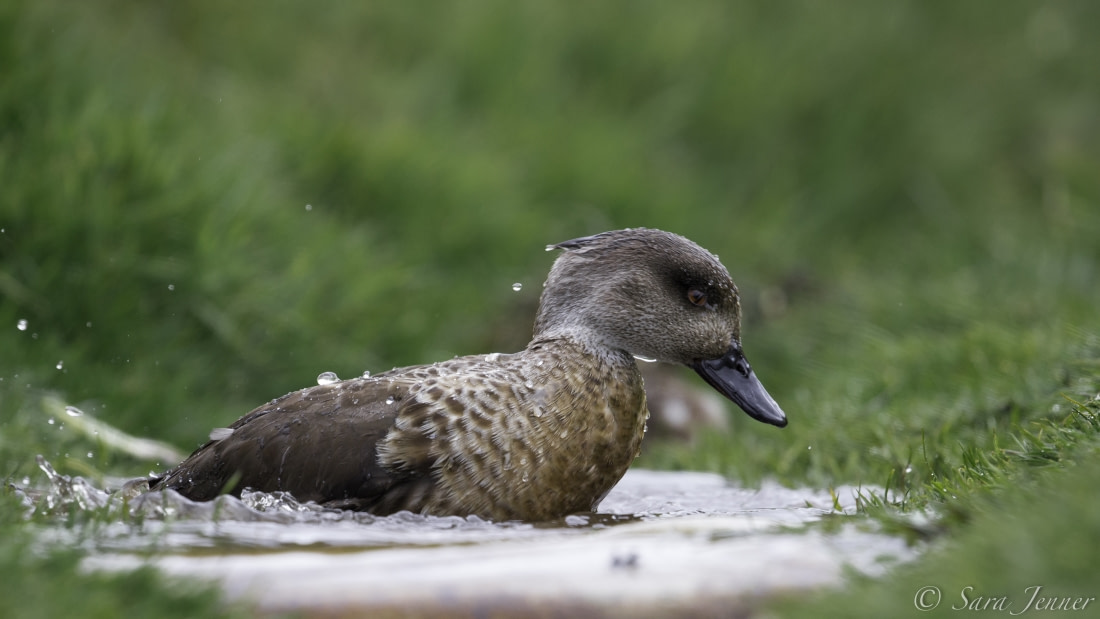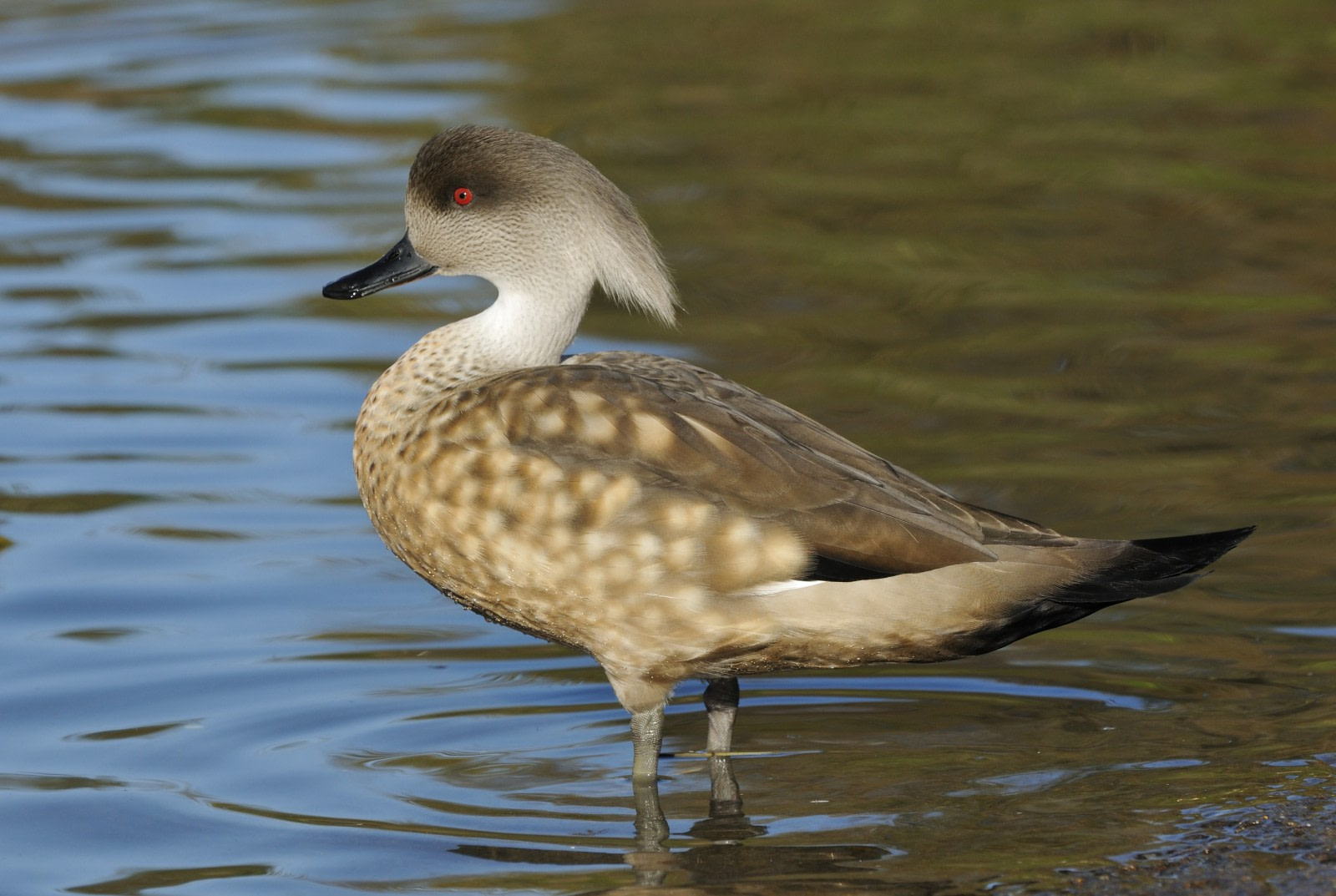Name: Patagonian Crested Duck (Lophonetta specularioides specularioides)
Length: 50 to 60 cm
Weight: 1kg
Location: Chile, Argentina, Falkland Islands
Conservation status: Least Concern
Diet: Invertebrates, algae, crustaceans, seaweed
Appearance: Mottled grey and brown, lighter along the belly
How do Crested Ducks feed?
Crested Ducks are "dabbling ducks" that feed from the water's surface, rarely diving. When surface food is scarce, they make shallow dives to hunt molluscs, crustaceans, insects, and larvae.
Are Crested Ducks social?
Like other ducks, Crested Ducks flock in groups, sometimes numbering in the hundreds.

How fast do Crested Ducks fly?
Crested Ducks can sprint up to 95 km per hour for short distances, with cruising speeds around 80 km per hour.
What are Crested Duck birthing rituals like?
The breeding season is between October and December. They build nests in shallow coastal regions or near ponds, hiding them in tall grass or foliage. Nests are made from surrounding vegetation and lined with feathers. Females lay 5 to 8 eggs per clutch, each weighing around 56 grams. The female incubates the eggs for about a month. Both parents tend to the ducklings, which fledge at about 10 weeks old.
How long do Crested Ducks live?
Crested Ducks live an average of 20 years in the wild.

How many Crested Ducks are there today?
There is no exact number for the worldwide population. The Falkland Islands population is around 20,000 individuals.
Do Crested Ducks have any natural predators?
They are occasionally attacked by the Black-crowned Night Heron, and ducklings are vulnerable to seabirds like the Skua.
7 Incredible Crested Duck Facts
- The "Crested" part refers to a tuft of feathers on the back of the duck's head.
- Crested Ducks are non-migratory.
- They are very aggressive, battling potential invaders.
- An adult pair may raise more than one brood a year.
- They have bright orange or red eyes, brightest in breeding males.
- The Andean Crested Duck is slightly larger than the Patagonian version.
- The crest is often not evident on any one individual.






Related Trips



17 Reasons to Cruise the Falklands






 19 Days / 18 Nights
19 Days / 18 Nights



